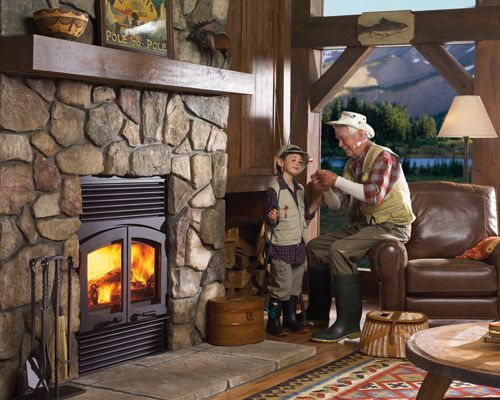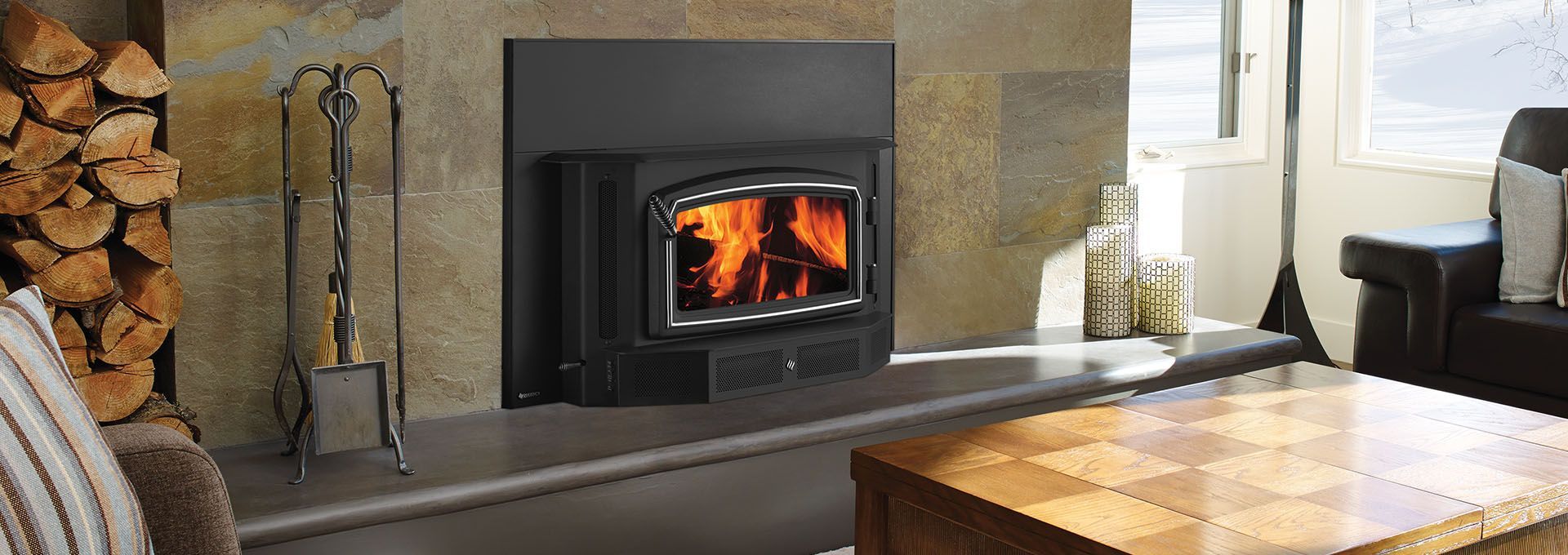What NOT To Burn In Your Fireplace

The question of what is safe to burn in your fireplace really depends on your definition of safe. Technically speaking, nothing you burn is really safe. You are, after all, playing with fire. That being said, some things are better than others, and there are many reasons you should not burn certain materials. In my opinion, you really shouldn’t burn anything in your fireplace other than seasoned wood, preferably hardwood. Here are some specific things you should not burn and why:
Unseasoned Wood
Green wood (wood that is not seasoned) is not good for your fireplace. Not only does it take forever to light, but your fire will also never generate the heat that you want it to. The cooler temperatures of a green fire also don’t allow the creosote in smoke to burn up, and that creosote adheres to your chimney causing buildup. In addition, green wood is known for producing an abundance of smoke. If there’s so much smoke that it can’t get up your chimney, the next available outlet is inside your home. I don’t know about you, but I don’t want smoke inside my house, ever. It’s toxic, and I’d like to remain healthy.
Cardboard, magazines, wrapping paper, or newspaper with colored ink
Who hasn’t started a fire with cardboard, wrapping paper, or various household paper items once or twice…or probably more like a hundred times? It’s organic, right? What you need to consider is that they can be full of man-made chemicals and metals that are released into the environment when heated. Not only that, but some of them are treated with fire retardant chemicals which actually make it difficult to start fires with them. They also create a significant amount of ash, and small pieces can become airborne and either ignite creosote deposits inside your chimney or escape out of your chimney, potentially starting an unintended fire in your chimney or outside your home.
Plastics, rubber, or foam
If you’ve ever thrown a plastic bottle onto a bonfire, you’ll know that after those suckers melt, they actually burn very well and for a good length of time. You may be thinking of tossing it in your fireplace, but you probably really shouldn’t. The main problem is a substance known as dioxin. Dioxins are produced by burning almost anything, but burning plastics is especially bad due to the high concentration of chemicals. Dioxins are known as a highly potent carcinogen and once released into the environment, they remain for years. Decades even. They harbor in the fatty tissues of animals (which most of us eat) and cause a number of health problems, including cancer, infertility, and developmental problems. So while you could toss that plastic bottle into your fire, it’s probably better for the environment and public health if you don’t.
Pressure treated or painted wood, plywood, and particle board
All of these products contain toxic chemicals that are released when burned. Not only are the chemicals an issue, but these products can result in a much hotter fire than what is generally intended to burn in your fireplace.
Wet, rotted, diseased, or moldy wood
This is especially important to avoid if you store wood inside your home. Wet wood can allow mold to grow. Never, ever store wet wood inside your home. Mold can be distributed throughout your home and cause health problems for your entire family.
Rotten wood could be filled with bugs and pests that you really probably don’t want inside your house either, and they’re not always visible. Not only that, but wet or rotten wood is not going to make good firewood for you. It’s usually too damp and decayed to do you any good. It may result in a lot of smoke production as well.
Avoid diseased or infested wood as well, especially if you are considering transporting it. You could be spreading the disease to other trees.
Driftwood
This one may come as a surprise to many people. You should not burn driftwood. Ocean driftwood is highly saturated with salt, among other chemicals. It’s the reason that driftwood burns in pretty colors sometimes. Remember those dioxins we just talked about? Yup, the chloride in salt combines with other gases when burned to create dioxins. When you burn driftwood, you are releasing dioxins into the atmosphere. Not only that but if you have a fireplace insert, the salt can actually damage the insert, so avoid burning driftwood.
Certain Trees, Bushes, and Shrubs
Oleander, Manchineel, English Yew, and Laburnum trees should never be used for firewood. They are extremely poisonous and smoke from burning one is toxic. Seasoning the wood does nothing to lower the toxicity either.
Black or Mexican Elder trees contain a natural form of cyanide, and burning one can result in cyanide poisoning if the smoke is inhaled.
This may go without saying, but you should also generally avoid burning any plant that contains the word “poison” in the name, such as poison ivy, poison oak, and poison sumac. Burning these plants can potentially release urushiol oil particles (the reason you itch) into the air. This can be extremely dangerous for people that are susceptible to it, especially if they breathe it in.
Explosive materials
This should be a given, right? Don’t throw things into a fire that could explode. But sometimes you should avoid things even coming near a fire. Oxygen tanks rank number 1 on this list. Do not use an oxygen tank near an open fire! Other things to avoid would be gas cans, alcohol, aerosols, and other highly combustible items.
The post What NOT To Burn In Your Fireplace appeared first on Chimney Works & Rocky Mountain Stoves.
Search the Outpost





